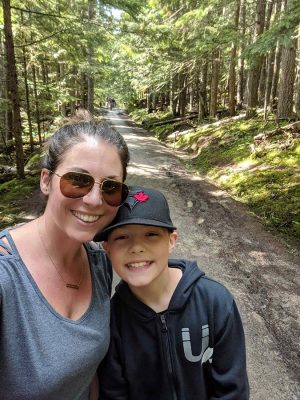We can’t live in fear until a vaccine comes, says local parent
By Fran Yanor / Legislative Reporter
Education is a ‘vital service,’ essential for children’s development and success in life, and the Province is relying on the best science and public health advice to return students to the classrooms in September, said B.C.’s Education Minister Rob Fleming.
“Education is one of those vital services in our province,” Fleming said at an Aug. 26 press conference announcing B.C.’s back to school plan for September. “It is a must for all children, and it must be delivered in the best and safest way possible.”
All Kindergarten-to-grade 12 students will return to full-time, in-class learning starting with orientation on Sept. 10.
The in-school return garnered support in some quarters and resistance from others.
As of Aug. 30, an online petition advocating for optional in-class schooling had garnered more than 40,000 signatures.
“I think a lot of people are living in more fear than maybe we need to,” said Janine Jensen, Chair of the Valemount Parent Advisory Committee and mother of a toddler and two school-aged children. “Because the word pandemic has such a negative connotation with it.”
A registered nurse, Jensen has spent her career practicing health and safety protocols to protect vulnerable populations from viruses and communicable diseases.

Every year, the flu wipes people out, and years ago, swine flu decimated the aged populations, Jensen said. “Yet, we were able to contain it.”
Jensen is perplexed at the resistance to in-class instruction. Most people are back to work, they go grocery shopping, they stay in hotels, and they’ve travelled out-of-town over the summer. “The world hasn’t shut down,” said Jensen. “We can’t just live in fear for the next year until a vaccine comes.”
Schools are a very controlled environment and we have good solid plans in place, said Provincial Health Officer Dr. Bonnie Henry. “They are well thought out with each community in mind.”
The BC teachers Federation is calling for reduced class sizes, mandatory masks where distancing isn’t possible, and enhanced ventilation, among other things.
Prince George Teachers Federation president Joanne Hapke said teachers want to reunite with students in the classroom but the new guidelines aren’t safe for them.
“The physical distancing measures will not work within a classroom,” Hapke said. “There’s no way we can keep six feet apart from everyone.”
Under the new safety protocols, minimal contact will be recommended in classrooms, but neither masks nor physical distancing will be required. Students and staff will belong to learning groups of 60 people at the elementary level, and 120 people for high schools. Learning groups will limit interactions to the same people over a semester or year while giving students (particularly young children) more freedom to interact within those groups.
The limited group numbers will allow public health to trace close contacts quickly if someone tests positive.
The guidelines incorporate the best science-based, public health advice to have as many children as possible back in classrooms , Fleming said.
In June, 200,000 B.C. students returned to part-time, in-class instruction in the province. During that time, two educators were diagnosed with COVID-19. Both were exposed to the virus in the community and not believed to have passed it on to anyone in schools. No students were diagnosed with the disease.
“We were able to manage it,” said Henry. “And we managed it quickly and efficiently without transmissions.”
The provincial health officer has the most up-to-date research and knowledge of COVID, said Prince George School District Superintendent Anita Richardson, who expressed confidence in the Ministry of Education’s guidelines and encouraged parents to make decisions based on what the most knowledgeable experts were saying.
Despite the new cases over the summer, B.C. continues to have among the lowest rates of COVID and new cases per capita relative to other jurisdictions worldwide, said Henry.
“We have very low level of spread, or no spread, in most communities here in BC,” said Henry. “And we expect to see that in our schools.”
We can’t wait for zero risk, said Richardson. “At some point, we have to realize it isn’t zero risk for anything.”
Few children have been diagnosed with COVID-19 in the province and most had none, to mild, symptoms. As of Aug. 27, 375 people under 20 years old had tested positive for the disease in B.C. and only 4 had been hospitalized for it. Despite representing 19 per cent of the province’s population, only seven per cent of the 5,319 total cases were children and youths.
“It’s the children passing it to the adult piece that is concerning me,” said Hapke. “Our concern is keeping those adults safe.”
Teachers should wear full protective gear if that will make them feel safer, said Jensen, adding students will adjust whatever the protocols. “The impact on them mentally and emotionally of not having school… is far worse then trying to figure out the gloves and the masks and whatever.”



